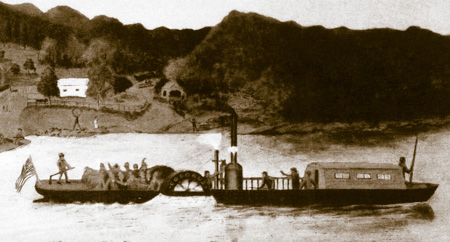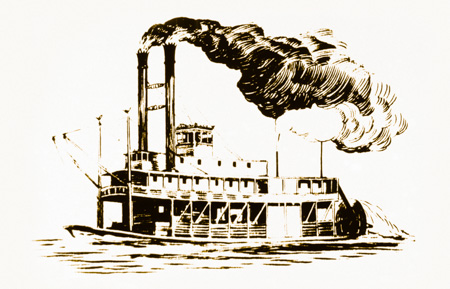In 1807, Robert Fulton and Robert Livingston built the first commercial steamboat in America. It carried passengers between New York City and Albany, exciting the public and investors. In 1825, the Brandywine Iron Works (later known as Lukens Steel) was given the contract to provide boilerplate for the first iron-hulled steam ship in America, the Codorus. Built by John Elgar in York, PA, the ship displayed the power of steam by navigating the rough waters of the Susquehanna.
By the 1840s, steam ships were a common sight along American waterways, especially in states bordering the Mississippi River. During the Civil War, steam vessels were used at the Battle of the Monitor and Merrimack, while major rivers proved essential in battle strategy. Although the age of the Steam Ship was somewhat short lived due to the coming of the railroad, it remains an American icon of progress.




